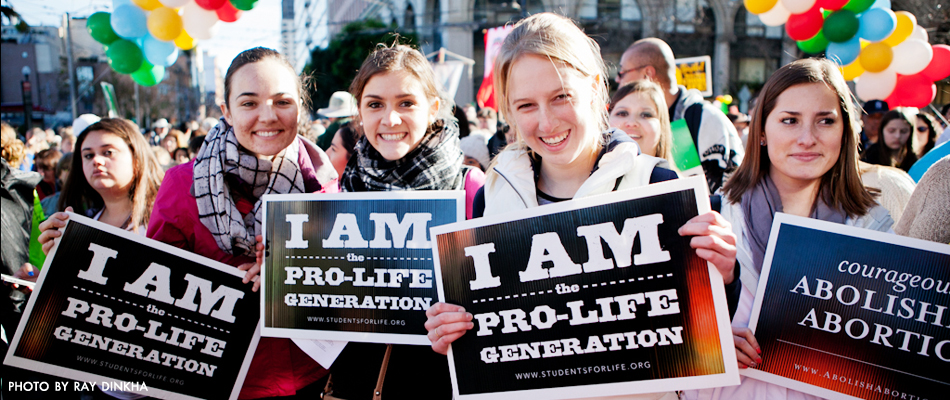This week at the left-leaning ThinkProgress, Tara Culp-Ressler contributes an article called “Abortion Rights Are Winning Legal Battles, But Losing the Larger War,” in which she celebrates the recent legal victories for supporters of abortion rights. Two cases stand out:
- A federal judge struck down Arkansas’ 12-week abortion ban.
- The settlement of a lawsuit has allowed North Dakota’s one abortion clinic to remain open for the time being.
These are just two of the many judicial decisions that have undercut legislation geared toward regulating and restricting abortion access.
Uneasiness in the Pro-Choice Camp
But all is not well for supporters of abortion rights, as Culp-Ressler points out.
Bits and pieces of these laws remain in place, such as the requirement in Arkansas for women to undergo an ultrasound to determine if a fetal heartbeat is present. In similar legislation across the country, lawmakers are erecting barriers to abortion through mandatory ultrasounds, waiting periods, parental notification, and clinic regulation. She concludes:
Although the complex restrictions that target clinics and providers are often most insidious, they tend to get the least attention. That’s why, even though reproductive rights supporters are winning most of their legal battles, they’re losing the larger war.
The Battle for the American Conscience
I agree with Culp-Ressler that the pro-choice lobby is winning in federal courts while losing the larger war. But I don’t think the battleground is primarily in legislatures. Instead, we’re locked in a battle for the consciences of the American people.
The hope of the pro-life community is a day when abortion is not simply “illegal,” but unthinkable. The goal is human rights for all human beings, to live in a country where human life is so esteemed that the very idea of abortion is as repulsive as the ancient Roman practice of infanticide or last century’s eugenics movement.
Here are some additional reasons abortion rights supporters are winning legal victories but losing the larger war.
1. These unsuccessful laws still succeed in bringing attention to the humanity of the unborn.
When the politicians are publicly debating abortion bans after a heartbeat is detected or once pain can be sensed, the conversation has shifted from the mother to the child. We’re talking about what abortion is: a procedure that terminates a pregnancy by ending a human life.
In nearly every abortion, a human heartbeat is stopped. Let that sink in for a moment.
The reason Americans are conflicted about abortion is that compassion for women in difficult circumstances is bumping up against a profound realization that the life in the womb is human.
2. Many of these laws seem reasonable to Americans.
Polls are all over the place, indicating that Americans aren’t fully on the pro-life or pro-choice side of the ledger. We don’t like the idea of abortion being legal for any reason; neither do we like the idea of it being banned for every reason. But polls do show that support for abortion rights drops precipitously as the pregnancy progresses.
The pro-life strategy is to seize the widespread support for late-term abortion restrictions in order to chip away at Roe v. Wade. The pro-choice strategy is to counter these attempts by convincing the public that these restrictions are unreasonable and infringe upon women’s rights.
On this issue, the pro-choice side has a more difficult task in the court of public opinion. It’s hard to say that 20-week abortion bans are “extreme,” for example, when most of the world bans abortion after the first trimester. (In fact, many Europeans see U.S. advocacy for abortion in the second and third trimesters as barbaric.) Our lax abortion laws place the U.S. in the company of just three other countries that permit abortion after viability: China, North Korea, and Canada.
3. A mother’s womb is no longer invisible.
12 weeks is the end of the first trimester. Here’s how Pregnancy.com describes the child’s development at this stage:
Your baby’s fingers will soon begin to open and close, his toes will curl, his eye muscles will clench, and his mouth will make sucking movements. In fact, if you prod your abdomen, your baby will squirm in response, although you won’t be able to feel it. His intestines, which have grown so fast that they protrude into the umbilical cord, will start to move into his abdominal cavity about now, and his kidneys will begin excreting urine into his bladder.
Meanwhile, nerve cells are multiplying rapidly, and in your baby’s brain, synapses are forming furiously. His face looks unquestionably human…
Keep in mind, this is 12 weeks, only halfway to viability, the point where abortion restrictions kick in. But abortion supporters not only want abortion access at 12 weeks, but also from 20-24 weeks (cue the cheering of Wendy Davis’ pink sneakers).
With ultrasounds giving us a glimpse into the womb, the fetus is no longer a faceless victim. We can see the human in the womb. The millennial generation’s first baby scrapbook pictures are in the womb, not after birth.
Scientific and technological advances have shown us the miracle of life like never before. It may be true that seeing an ultrasound doesn’t affect the woman who is determined to get an abortion, but the reason for this may be frighteningly tragic: frightening if it means they go into the abortion clinic fully aware that their decision will end a human life, tragic if it means they think they have no other option.
Conclusion
The pro-life movement has a long way to go before abortion is abolished in the United States. We may be winning the larger war, but there are plenty of legal battles ahead, as well as the funded fury of abortion advocacy groups.
But now that the Kermit Gosnell trial has opened the door for increasing clinic regulations and medical technology has opened the window into the womb, it’s more likely that the roof of Roe v. Wade will eventually crumble under the weight of its own inconsistencies. On that day, states will be free to protect life at all stages, and human rights may finally triumph over the euphemism of “reproductive health.”



















